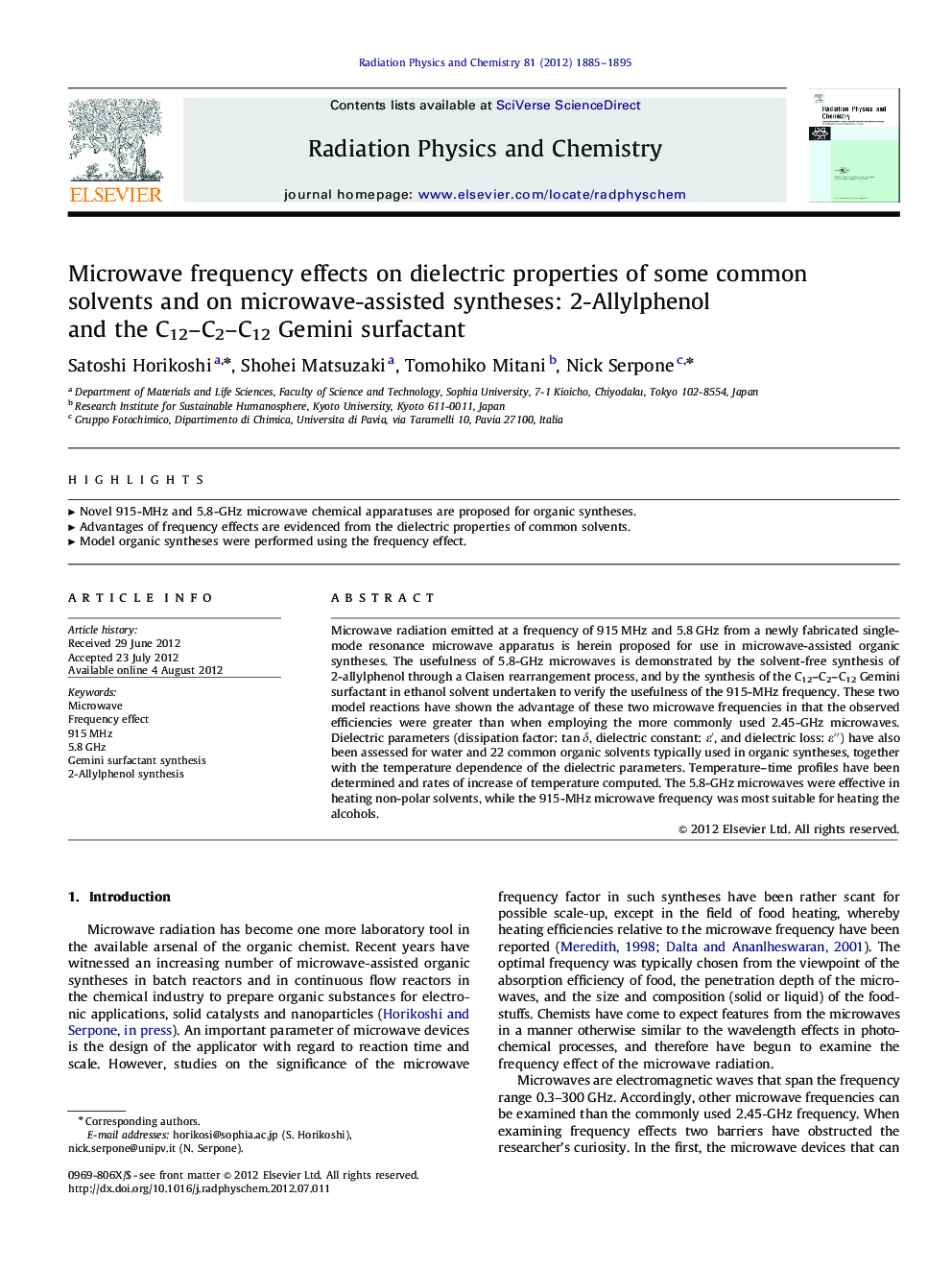| Article ID | Journal | Published Year | Pages | File Type |
|---|---|---|---|---|
| 1886362 | Radiation Physics and Chemistry | 2012 | 11 Pages |
Microwave radiation emitted at a frequency of 915 MHz and 5.8 GHz from a newly fabricated single-mode resonance microwave apparatus is herein proposed for use in microwave-assisted organic syntheses. The usefulness of 5.8-GHz microwaves is demonstrated by the solvent-free synthesis of 2-allylphenol through a Claisen rearrangement process, and by the synthesis of the C12–C2–C12 Gemini surfactant in ethanol solvent undertaken to verify the usefulness of the 915-MHz frequency. These two model reactions have shown the advantage of these two microwave frequencies in that the observed efficiencies were greater than when employing the more commonly used 2.45-GHz microwaves. Dielectric parameters (dissipation factor: tan δ, dielectric constant: ε′, and dielectric loss: ε′′) have also been assessed for water and 22 common organic solvents typically used in organic syntheses, together with the temperature dependence of the dielectric parameters. Temperature–time profiles have been determined and rates of increase of temperature computed. The 5.8-GHz microwaves were effective in heating non-polar solvents, while the 915-MHz microwave frequency was most suitable for heating the alcohols.
► Novel 915-MHz and 5.8-GHz microwave chemical apparatuses are proposed for organic syntheses. ► Advantages of frequency effects are evidenced from the dielectric properties of common solvents. ► Model organic syntheses were performed using the frequency effect.
